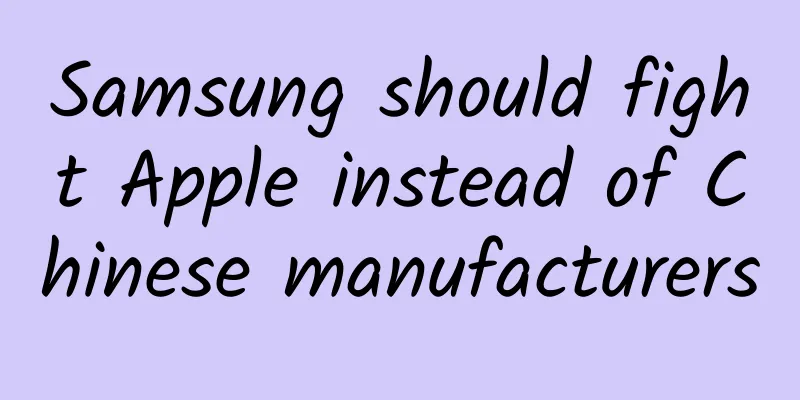Sharp under Foxconn’s thinking: the father of LCD or the king of low prices?

|
Since Foxconn took over Sharp in August last year, every market move of Sharp has attracted much attention from the domestic market. On June 19, Sharp TV announced its 618 battle report. In the 618 home appliance brand promotion, Sharp's total sales across all channels achieved a record of over 1 billion, and its total sales across all channels for black appliances (referring to home appliances that can provide entertainment) reached 430 million. It ranked first in large-size products on JD.com and Tmall, and first in black appliances on Gome. But at the same time, the sales growth did not bring Sharp an increase in reputation, and market doubts continued to emerge, saying that Sharp is no longer the Sharp of yesterday. According to the results of a recent survey published by Home Appliances, the "Japanese imported screen" mentioned in Sharp's TV promotional materials is not actually the case. For example, the panel of Sharp LCD-50SU460A 50-inch color TV is from Innolux, a subsidiary of Foxconn Technology Group. Analysts said that since Foxconn took over Sharp last year, the century-old company has started a price war. Data from CMM showed that since November 2016, the average price of Sharp TVs has dropped precipitously, from more than 6,000 yuan at the beginning of 2016 to around 3,800 yuan in May 2017, and the average price has continued to decline. After entering 2017, Sharp announced that it would raise its TV shipment target from the original 10 million units to 14 million units in 2017. This is higher than the sales target of more than 10 million units set by Terry Gou in 2016, which shows its determination to sweep the market. From "high-end brand" to "price butcher" As a century-old company, Sharp TV has long enjoyed a good reputation in the mid-to-high-end market. As a world-leading technology innovation company, many Chinese consumers praise Sharp's screen technology and are willing to pay for its quality. China has become Sharp's main battlefield. After Foxconn took over, Sharp began to focus on its new positioning of "high cost performance", and started the long-awaited large-scale price reduction of color TVs in the home appliance market. Starting from the 2016 Double Eleven, Sharp TV activities such as "buy a 70-inch TV and get a 60-inch TV free" frequently appeared on e-commerce platforms. This year, Sharp has been engaged in a price war. On June 6, Sharp TVs were on sale on Tmall, with a 70-inch large-screen TV priced at 7,499 yuan, a 400 yuan reward for posting pictures, and a 498 yuan movie and TV membership. The actual price of a 70-inch large TV is less than 7,000 yuan. This price has become the lowest price in the world. Comparing the average prices of Sony, Hisense, TCL and the industry as a whole, it can be seen that Sharp's average price is seriously abnormal. While the industry and mainstream brands are generally experiencing an upward trend in average prices due to size iterations and consumption upgrades, Sharp's average price is declining against the market trend. In April and May 2017, its average price was lower than the industry average. The latest data from CMM shows that the average prices of Sharp's 45-inch, 50-inch and 60-inch TVs are 1,933 yuan, 2,652 yuan and 4,671 yuan respectively, while the annual average prices of the color TV industry are 2,122 yuan, 3,540 yuan and 6,151 yuan. As a result of the price war, Sharp has achieved extraordinary growth in the short term. According to monitoring data from CMM (online weekly report + offline monthly report) from January to May this year, Sharp's domestic sales volume reached 661,700 units, a rapid growth rate. As foreign brands, the average online price of Sony's high-end ultra-large-screen TVs in the domestic market has been raised to 8,779 yuan, while that of Samsung is 7,538 yuan. Domestic brands are also on an upward trend with the growth of size and technology. Market analysts said that Sharp was once known as the "Father of LCD" and was famous for its excellent products and leading technology. But now it has deviated from its mid-to-high-end positioning and entered a vicious circle of low-price competition. In this year's "618" mid-year e-commerce war, Sharp, also a Japanese company, continued its "low-price strategy" since the beginning of this year, and its 70-inch TV even hit the lowest price in the world. Sony's mid-to-high-end strategy remains unchanged, and there is almost no sign of price cuts or promotions. At present, most consumers buy Sharp out of trust in the technology and craftsmanship of Japan's old-fashioned home appliances. After Foxconn acquired Sharp, the problems caused by the price war are gradually surfacing. JD.com shopping reviews show that complaints about the quality of Sharp TVs have increased in the past year, focusing on picture quality, screen quality, remote control quality, etc. In addition, there are nearly 100,000 entries on Baidu search about whether Sharp TV screens are made in Japan or Taiwan. Market analysts said that while Sharp's sales doubled, its sales revenue only increased by 22%, which was much lower than the sales volume. Although low prices brought short-term performance growth, in the long run, it would inevitably undermine Sharp's high-end brand image, brand value and reputation that it has cultivated over more than 100 years. Data showed that Sharp's Q3 2016 financial report showed a profit, but the 10th generation panel factory (SDP, Sakai Factory) jointly owned by Foxconn and Sharp suffered losses in the 2016 fiscal year, ending the previous three consecutive years of profitability. Can the “long-ill” Sharp withstand Foxconn’s “drastic measures”? Sharp, which has been a century-old company, was once synonymous with Japanese innovation. However, after experiencing huge losses in fiscal 2012, turning losses around in 2013, another loss in 2014, and huge losses in 2015, it was sold to Foxconn in 2016. After Terry Gou took over Sharp, he launched a series of rescue operations. In its past, Sharp was positioned at the high end and was known as the father of LCD. However, after Foxconn took over, the average price of Sharp continued to decline. This move inevitably made consumers doubt its quality. Industry insiders said that among the mainstream brands in the domestic market, 70-inch color TVs are basically high-end products, with exquisite industrial design and materials, rarely plastic shells, and the overall body is also very slim. From a cost perspective, the current market price of an A+ grade LCD screen is more than 10,000 yuan. Sharp is dumping below cost, and it is difficult to achieve sustainable development. Questions about the screen have always existed. Yuan Xuezhi, CMO of Foxconn Group, said in an interview with the media that not all screens come from Sharp, and that products from Foxconn's Innolux brand will also be used. If the product uses a screen provided by Sharp, there will be a logo. If it is not a Sharp screen, consumers will be specifically informed. However, according to a survey by home appliance people, generally original imported screens will be specially displayed, and the introduction of the Sharp LCD-58S3A 58-inch TV screen does not mention what screen it is. For this reason, home appliance people have consulted JD customer service many times, but no one answered, and then transferred to Sharp JD store. After communication, there was no clear reply. It is reported that after Foxconn acquired Sharp, the localization strategy it announced was "noble but not expensive". Sharp's positioning as a high-end brand will not change, and it will leverage Foxconn's advantages to continuously optimize its own industrial chain, improve efficiency and optimize costs. But in fact, consumers' concerns behind low costs first come from changes in hardware, such as LCD screens. Sharp, which has always been known for its high-end brand image, is now involved in price wars to seize the low-end market. The market is worried that Sharp will start to take the low-end route and bring about changes in quality. Price wars are no strangers to Chinese manufacturers, but even Internet TV brands that advocate "free hardware" are aware of the unsustainability of the low-price strategy. Since the beginning of this year, the average unit price of Internet brands including LeTV has been "taking small steps and running fast." Li Yaqin, deputy general manager of Qunzhi Consulting, believes that "Sharp should still take advantage of the industrial chain advantages of Foxconn and Sharp panels in the future to launch some new products that better represent the Sharp brand, rather than blindly selling at low prices. Although long-term low prices can stimulate sales in the short term, they are not conducive to brand development in the long run." What is the future of Sharp under Foxconn’s thinking? Historically, Sharp was "noble and expensive". Now Foxconn has applied its usual low-price strategy to Sharp's brand operation in the Chinese market, but the effect is still unknown. Industry experts analyzed that although Foxconn used its super foundry capabilities to reduce the price of VIA chips and motherboards to the lowest in the market and gain market share, highly integrated industrial products are fundamentally different from the above situation. The profit margins in the home appliance industry are thin as a razor, and selling below cost will hit the industry's Achilles' heel. However, in order to quickly enter the market, Sharp TV has acted in an uncharacteristic way, especially since the second half of last year, when it invested heavily in the media and used aggressive promotional methods to squeeze out its peers and seize the market. Sharp is the brand with the largest sales growth this year. This is because Foxconn took advantage of the time difference, allowing Sharp to "go against the industry trend". Relying on its existing influence as a foreign brand and its competitive product prices, Sharp has squeezed out a large portion of the current market share of mid- and low-end brands. However, the various changes that have quietly taken place will make consumers realize that Sharp is no longer the Sharp of yesterday. In the long run, this is not conducive to the development of Sharp in China. Analysts believe that as one of the world's largest consumer markets, the Chinese market has a significant impact on any color TV company. The fact that the new Sharp held its first color TV launch in China after joining Foxconn also shows that Sharp attaches great importance to the Chinese market. However, in the long run, what Chinese consumers value more has become a blind spot in Foxconn's thinking. China is carrying out supply-side reforms. As the famous financial writer Wu Xiaobo said, consumers who pursue a high-quality life are more willing to pay for the extra value of high-end products. Some experts said that long-term low-price competition and homogeneity problems have caused the growth of the color TV industry to be weak. Coupled with the impact of Internet TV, high-endization is an important way to break the homogeneity of home appliance competition. Some market insiders predict that Sharp and Foxconn are two companies with completely different tones. There may be two problems in future cooperation: First, Foxconn has a tendency to be eager for quick success and instant benefits in the color TV market, which may make Sharp, which has a craftsman spirit in its bones, unbearable. After Sharp passes the life-and-death line and gradually recovers, the incoordination of cultural genes may become the main contradiction; the other problem may appear on the market side. For example, some foreign brands implement a high-price and low-spec strategy in China, but the low-spec version is more expensive than the foreign price. If Foxconn cannot avoid occupying the mainland market with a low-price and low-spec strategy, or if it goes against the consumer trend of the rapid increase in the penetration rate of smart and large-screen TVs in the Chinese color TV market, then the Sharp brand may fall into the siege of losing the battle and grabbing volume at a low price. As a winner of Toutiao's Qingyun Plan and Baijiahao's Bai+ Plan, the 2019 Baidu Digital Author of the Year, the Baijiahao's Most Popular Author in the Technology Field, the 2019 Sogou Technology and Culture Author, and the 2021 Baijiahao Quarterly Influential Creator, he has won many awards, including the 2013 Sohu Best Industry Media Person, the 2015 China New Media Entrepreneurship Competition Beijing Third Place, the 2015 Guangmang Experience Award, the 2015 China New Media Entrepreneurship Competition Finals Third Place, and the 2018 Baidu Dynamic Annual Powerful Celebrity. |
<<: Dongfeng Honda recalls 294,511 Civics due to high oil level
>>: BMW and Great Wall Motors set up a new joint venture to produce electric Mini
Recommend
Can controlled nuclear fusion become a reality?
We live in an era of technological explosion, wit...
We are all pursuing high emotional intelligence, so why do we insist on low entropy in life?
The famous physicist Schrödinger once said in his...
The Third Session of the 13th National People's Congress (NPC & NPC) in 2020 has been postponed! When will the meeting be postponed to?
On the afternoon of February 24, 2020, the closin...
How to double the click-through rate of your creative content? Just read this article!
With the explosion of information flow advertisin...
iOS 14.8 released, all users are recommended to update
Early this morning, Apple pushed the official ver...
Did you know that people who love to chat are less likely to develop dementia?
Author: Sun Taixin, Chief Physician, Beijing Elec...
Momo Live Personal Anchor Membership Operation Guide
Personal anchor membership operation guide Indivi...
Can blacklisting Taobao help bring manufacturing back to the United States?
In its quest to attract manufacturing back to Chi...
6 marketing strategies that work well on the Internet and in physical stores, with 18 real cases included!
Without further ado, let’s get straight to the po...
The domestic APM industry is booming: Is OneAPM+Bonree really equivalent to Tingyun?
The hot listing of NewRelic has triggered a frenz...
Will consumers pay for adding a camera to the TV for social networking in order to differentiate themselves?
OPPO TV is here, and it comes with a front camera...
What does the user operation system of a tens-million-level product look like?
Earlier, the author outlined refined user operati...
Yu'ebao shrinks, Inner Mongolia Junzheng and Ant Financial's equity dispute has come to a conclusion
Inner Mongolia Junzheng, which once fought with A...
Should you turn off your phone before going to bed at night?
Before going to bed at night Do you have the habi...
One picture tells you how drastic the temperature drop is! Global warming is said to be a problem, so why are winters getting colder?
Coming, coming It's coming back with the cold...









